The flora of Austria
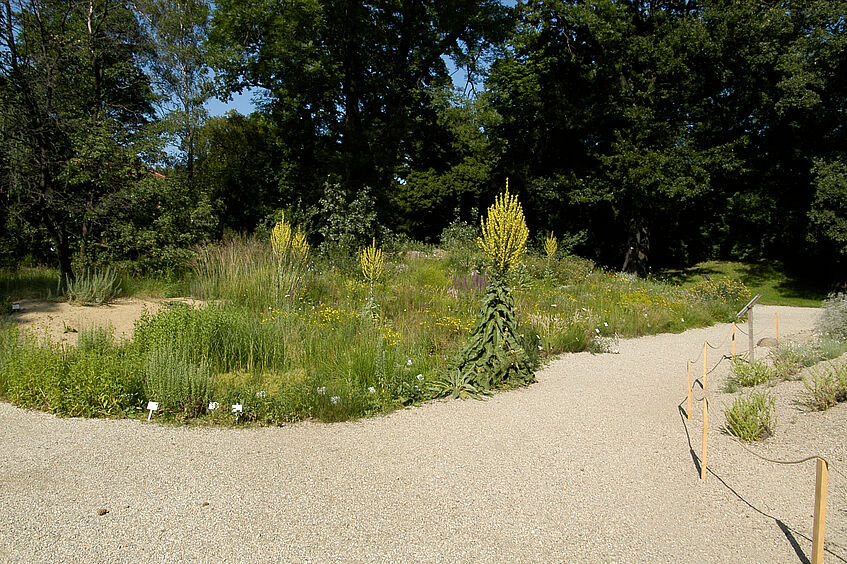
Pannonische Gruppe © BGUW_R. Hromniak
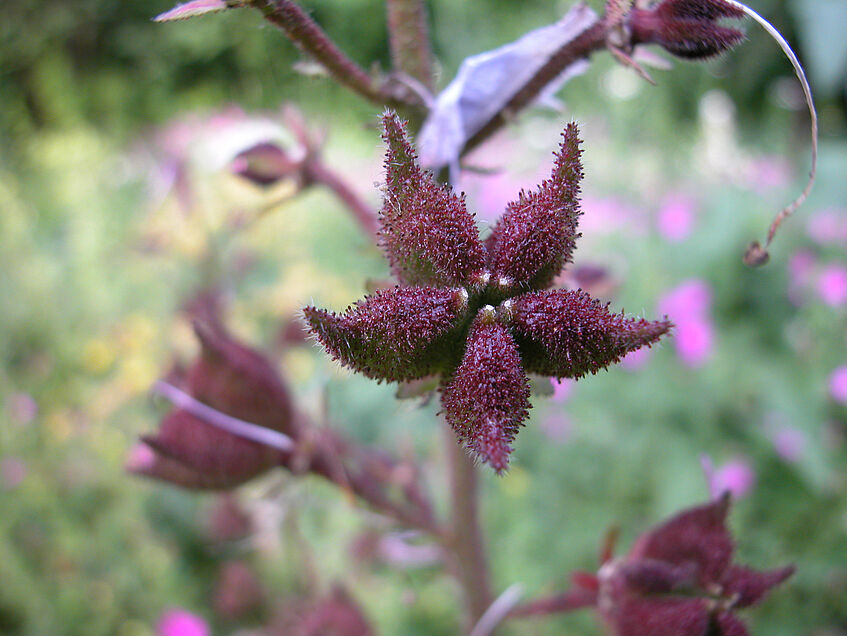
Dictamnus albus – fruchtend © BGUW_R. Hromniak
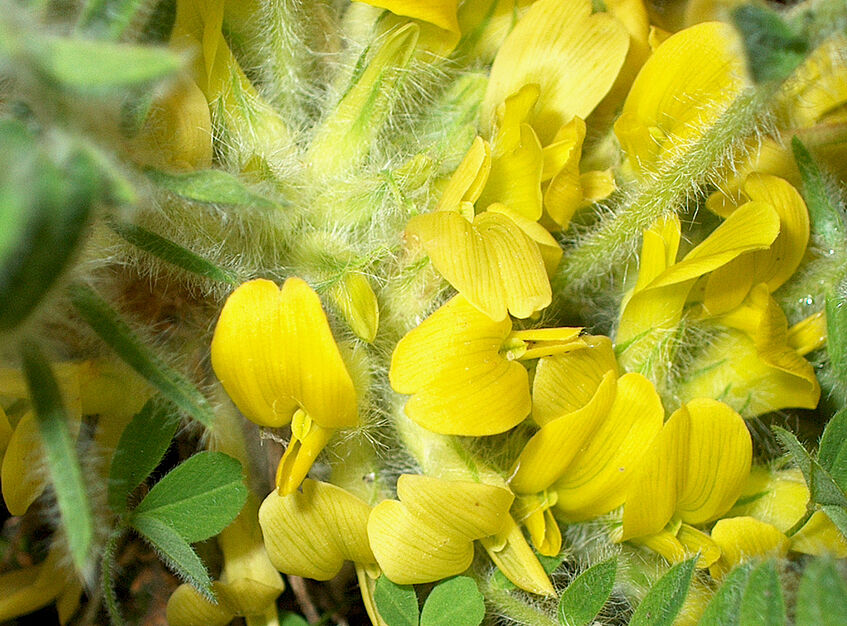
Astragalus exscapus © BGUW_R. Hromniak
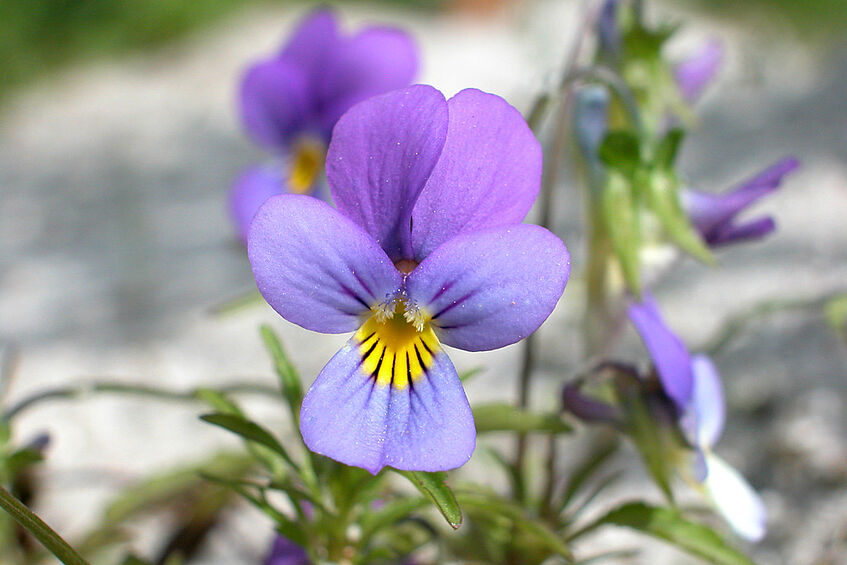
Viola tricolor spp. curtisii © BGUW_R. Hromniak
Group numbers: 36-37; in part: 38-43, 47
Between 1793 and1834, Nikolaus Thomas Host set up a comprehensive "Flora Austriaca" – a collection of the plant species occurring in the former Crown lands – in what is today's southernmost part of the Botanical Garden. In continuation of this tradition, representative elements of a "Flora of Austria" have been installed in this garden sector since the 1990s. They represent typical habitats and their plant life, in particular those of eastern Austria.
Pannonian Group
A selection of remarkable plants from the surroundings of Vienna (Groups 40 + 41, in part 38)
Northeastern Austria (Weinviertel, Wachau, Marchfeld, Vienna Basin in Lower Austria; northern Burgenland and eastern central Burgenland) is home to a striking number of plant species whose ranges do not extend further to the west in Europe. This is because the climate here in the east is warmer and drier in summer (more continental).
Despite this dry and warm (xerothermic) climate, no climate-related treeless vegetation (no true steppes) is present anywhere in the entire Pannonian region (Great Hungarian Plain and surrounding hilly regions: from the eastern fringe of the Alps in Lower Austria to Transylvania and from southern Slovakia to Vojvodina). Rather, the dry meadows in this area reflect either the soil (edaphic) conditions or human (anthropogenic) activity that has altered the originally dominating dry-warm oak mixed forests (exception: floodplains and swamps). After all, humans settled the Pannonian region very early on: they clear-cut the forests and converted them into extensive pastures ("Puszta", steppe meadows) and farmland. As a result, many plants inhabiting the true (climate-induced) steppes further to the east (e.g. southern Ukraine: so-called Pontian floral province) migrated into this dry landscape.
Many sub-Mediterranean species also grow in the Austrian (western) part of the Pannonian floral province. The term sub-Mediterranean refers to those species whose main distribution range lies in the transitional zone between the Central European and Mediterranean region as well as in the mountain belt of Mediterranean countries (climate: dry summers, cold winters). Examples include the downy oak and Diptam.
On the one hand, the Pannonian dry vegetation encompasses primary steppe meadows on naturally treeless, shallow soils over rock, gravel, sand and loess. On the other hand, it comprises secondary steppe meadows created by human interventions (clearing, grazing) that have sprung up on originally forested sites. Further differences reflect the geological substrate, the micro-climate and the type and intensity of past and present management. This has yielded a large number of quite different types of Pannonian dry meadows including rocky steppes, sand steppes, salt steppes, loess steppes, silicate steppes, grass steppes, meadow steppes, and bushy steppe forest margins.
The development of agriculture into more one-sided arable farming and winegrowing in the 20th century reduced this landscape. Its colorful, species-rich vegetation and flora has contracted to a very few, tiny remnants or was destroyed entirely, both in Hungary and Austria. Today, nature conservation efforts are being directed at preventing the complete loss of this Pannonian flora. Unfortunately, valuable Pannonian dry biotopes continue to be decimated and their plant life eradicated through plowing, fertilization and intensified agricultural practices; through pesticides and afforestation, especially by planting robinia (= "acacia"); through land consolidation, road construction, waste dumps, sand and gravel mining along with quarrying; through natural overgrowth with shrubs; through too intensive sheep grazing; and through excessive recreational uses.
For more information see the "Österreichische Trockenrasen-Katalog" (editors: Univ.-Prof. W. Holzner et al.; Grüne Reihe (Green Series) of the Austrian Federal Ministry for Health and Environmental Protection, Volume 6; Vienna 1986).
HBV, Univ. Prof. Dr. M. A. Fischer
The Serpentine Group
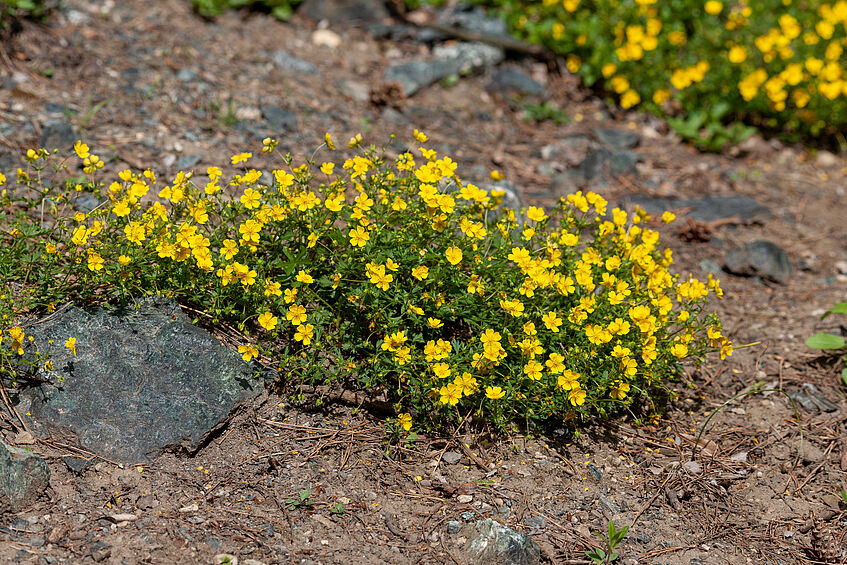
Potentilla crantzii var. serpentini © BGUW_R. Hromniak
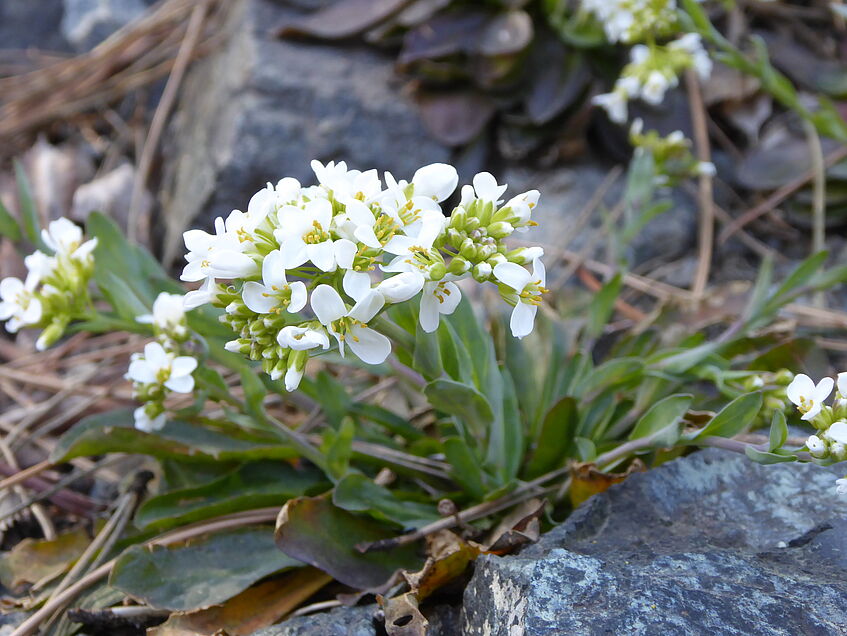
Noccaea goesingensis © Knickmann
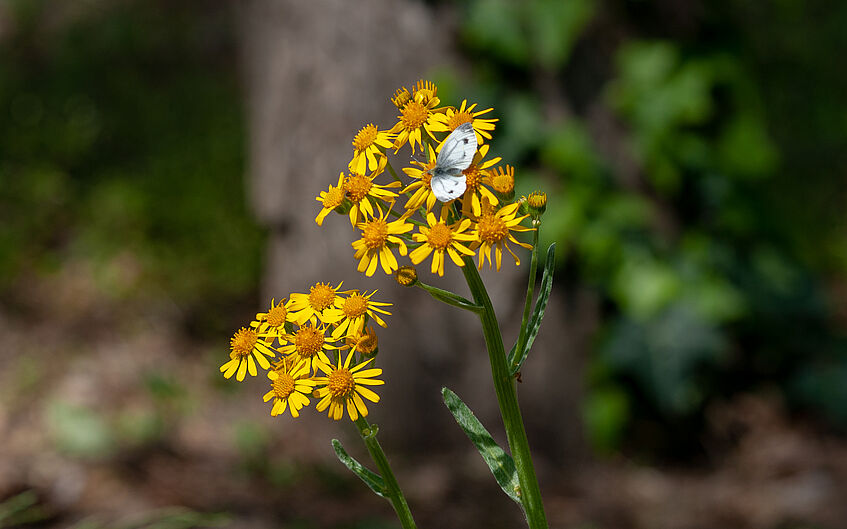
Tephroseris integrifolia ssp. serpentini © BGUW_R. Hromniak
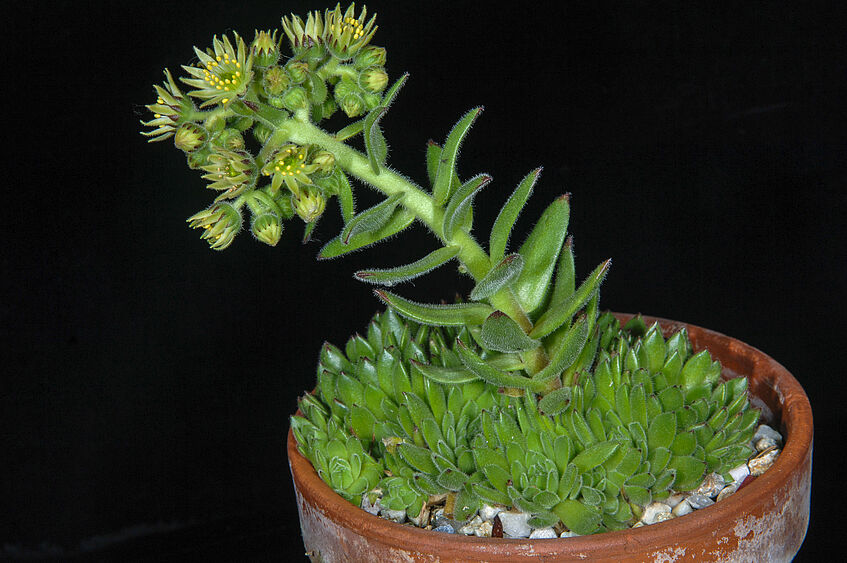
Sempervivum pittonii © BGUW_R. Hromniak
The Serpentine Group
Location in Garden: Group 47
The Serpentine display group shows a very special cross-section of Austria's flora.
Serpentine as a rock
Serpentine is a heavy-metal-containing and hydrated magnesium silicate. Iron and nickel make up most of the heavy metals. This rock derives its name from its gray-green, snakeskin-like color pattern.
Plants on serpentine
The special composition of serpentine, including minerals that are toxic for many plants, has given rise to a highly specialized vegetation on the soils derived from this rock formation. In fact, some plants grow only on serpentine, explaining the term "serpentine vegetation". Such species are usually poor competitors on "normal" soils and are often potentially endangered due to their highly restricted occurrence.
Deposits in Austria
Austria boasts a variety of serpentine sites. The best known are probably those around Bernstein in Burgenland. The rich serpentine deposits there have spawned an industry devoted to producing exquisite household articles and decorative objects. Additional deposits are located in Lower Austria (Wachau) and in Styria (larger deposits in Kraubath, Pernegg, Trieben and west of Rottenmann).
The Serpentine Display Group
In autumn 2015, a display group comprising highly specialized species living on serpentine sites was established at the University of Vienna's Botanical Garden. More than 30 different herbaceous species have been planted. The garden sector with the best conditions was chosen based on exposure and the presence of larger woody plants (above all Scots pine, Pinus sylvestris). The site was prepared so that it offered both shallower, stonier soils as well as somewhat deeper areas to accommodate nearly the full natural species spectrum. Rock material trucked in from Austria's serpentine locations provides the necessary mineral substrate.
The plants on display here originally stem from the Austrian serpentine sites and, over the years, most were raised in the Garden from seeds. Typical representatives include the Serpentine Carthusian pink (Dianthus carthusianorum subsp. capillifrons), the Serpentine field fleawort (Tephroseris integrifolia subsp. serpentini) or the Serpentine alpine cinquefoil (Potentilla crantzii var. serpentini).
Plant portraits and information sheets of this display group
- Ausstellung "Lebenskünstler"
- Castanea sativa - Edelkastanie, Maronibaum
- Crambe tataria - Tátorján-Meerkohl
- Der "kleinste Weinberg von Wien"
- Dracocephalum austriacum - Österreichischer Drachenkopf
- Dünen im Osten Österreichs
- Eine Wienerwaldwiese mitten in Wien
- Euphorbia - Euphorbienschau 2007
- Fomitopsis pinicola - Rotrandiger Baumschwamm
- Helleborus
- Maclura pomifera - Osagedorn
- Narzissenwiese
- Pannonische Trockenrasen
- Plan der Flora von Österreich-Schaugruppe
- Prunus tenella = Amygdalus nana - Zwergmandel
- Pulsatilla grandis - Große Kuhschelle
- Saumgesellschaften
- Die Serpentin-Schaugruppe
- Trockenrasen und Felssteppen über kristallinem Gestein
- Von Lösch zu Löss
Scientific projects
- LIFE-Nature-Project "Pannonische Steppen- und Trockenrasen" (2004-2008)
- LIFE-Nature-Project "Pannonische Sanddünen" (1998-2002)
- LIFE-Nature-Project "Bisamberg Habitat Management"
